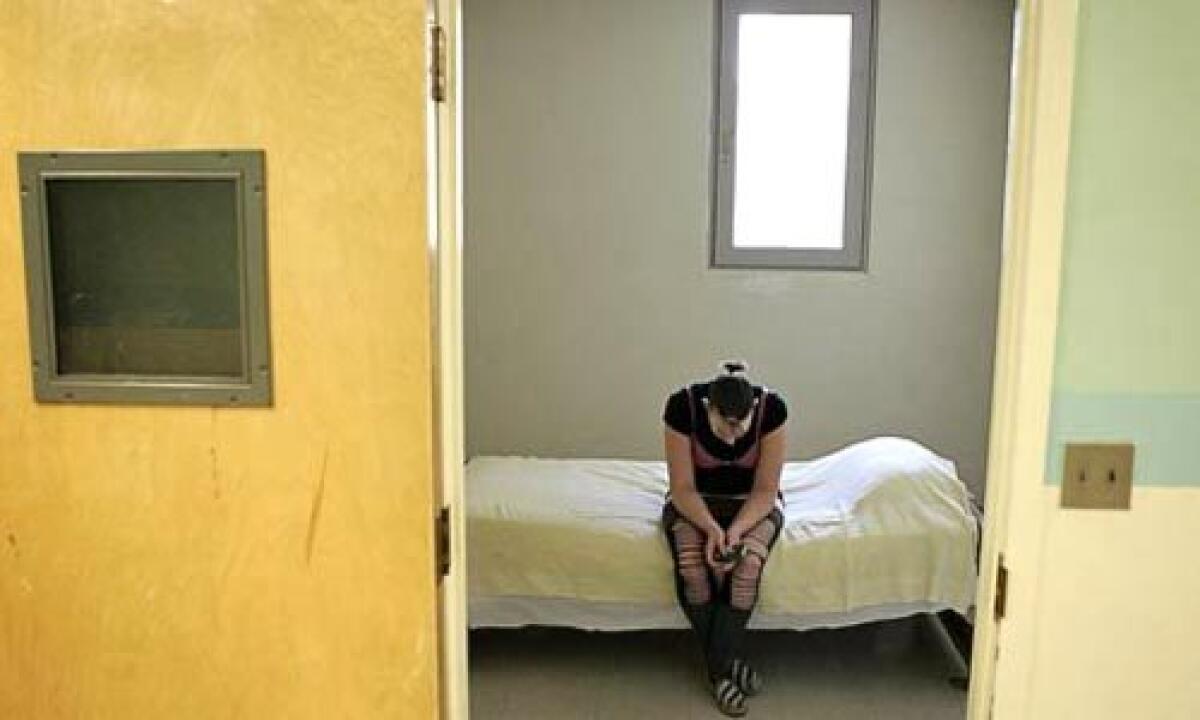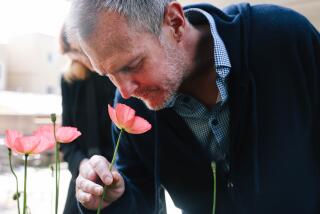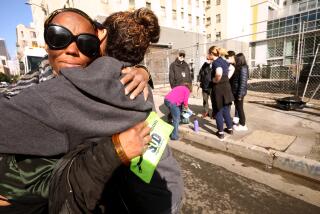Schizophrenia takes a daughter away

By the time she landed at Metropolitan State Hospital in 2006, Tiffany Sitton had been haunted by delusions for 15 of her 23 years. Spiders burrowed under her skin. Ghosts ordered her to hurt people. Schizophrenia and psychiatric drugs dulled her eyes and numbed her brain.
Hers was the most vexing kind of case, blending severe mental illness with a rebellious disposition and drug abuse. When she got to the austere Norwalk hospital known simply as Metro, she’d bombed out of virtually every other option the mental health system had to offer.
She had mastered the art of institutional life. If her caretakers wouldn’t give her a match to light a cigarette, she knew how to use a gum wrapper and a light socket to set fire to a tampon. She wore studded dog collars and shredded stockings, and her hair, once as wispy as the crown of a dandelion, had been hacked off and dyed.
None of that changed the fact that she was a wealthy kid from the suburbs whose bedroom, back home in a pocket of horse ranches and eucalyptus groves in San Juan Capistrano, was waiting for her.
She was scared at Metro, and perhaps she was right to be.
Past the red sign at the door of Unit 410 -- “HIGH AWOL RISK” -- was a prove-yourself hierarchy of bulimics and cutters and patients known as picas, who swallowed staples and keys and whatever else they got their hands on. During her six-month stay, three patients attacked her. One tried to rape her.
She called home, again and again, begging to get out.
Her parents refused.
Cynthia and Michael Sitton believed they had no choice. Before she could start getting better, they thought, she had to hit bottom.
The strategy seemed to work. When Tiffany was ready to leave Metro six months later, she seemed finally willing to embrace treatment.
“I don’t ever,” she told her mother, “want to be in this place again.”
So, one year ago, they made a pact. Tiffany would quit sabotaging her treatment, getting in fights, snorting other patients’ meds. She would remember why it was good to be alive. Her parents would find a top-of-the-line hospital. When she was able, she could visit at home. They would keep her safe. They would keep her out of Metro.
The next year would be a test -- of Tiffany and her parents, and also of California’s mental health system, which so often fails the toughest cases.
Unlike most who suffer from severe mental illness, Tiffany had everything going for her.
Her doctors had found the right cocktail of pills to ease her symptoms. She had a full-time advocate in her mother. Wealthy through Michael’s flooring company, the Sittons had spent more than $250,000 on her care. Now they pledged to redouble their efforts.
Would it be enough?
It came out of nowhere.
Tiffany tugged on the sheets next to her mother’s head and whispered into the darkness. She’d seen dogs in her room, menacing dogs with red eyes. Cynthia told her she’d had a nightmare.
“She insisted,” Cynthia said recently, “that she had been awake.”
And she had been.
Tiffany was 8.
Hers had not been the easiest of childhoods. Cynthia’s first marriage, to Tiffany’s biological father, had not ended well. Mother and daughter had spent several years living like gypsies, poor and mobile.
Still, they were unusually close, and Tiffany’s gregarious spirit seemed unaffected by the turmoil. Their lives had stabilized. Cynthia married Michael, like her a recovering alcoholic. Michael adopted Tiffany, and he and Cynthia had two more children.
The Sittons dismissed the hallucination at the time. They know now that it was the first symptom of schizophrenia, a disease shared by an estimated 2.5 million Americans.
At 12, Tiffany became convinced that she was personally involved in stories that appeared on the TV news. At 13, she began hearing voices. At Aliso Niguel High School, she shaved her eyebrows and announced that she was a member of a gang called the Slick 50s, though there was no evidence that she knew any actual members.
At 15, after she pulled a knife on a schoolmate, a county psychiatrist told Cynthia to order a pizza and give Tiffany more hugs. It was the first of many times the system would fail them.
After she stole a car, Tiffany landed in juvenile hall, where a doctor diagnosed schizophrenia. It was a particularly early onset of the disease, and the timing was devastating. Tiffany had exchanged the normal, vital chapters of adolescence -- algebra homework, prom, her first kiss -- for a bewildering and often terrifying fantasy world.
Cynthia steeled herself “to do anything I had to do to make her better.” She believed that there was help coming, that they could beat this.
“I still had the luxury,” she said, “of naivete.”
That wouldn’t last long. After Tiffany got out of juvie, she ran away, hitchhiking to Los Angeles, where she lived on the streets, eating uncooked ramen noodles and using any street drug she could find. A friend found her in Compton, badly beaten.
Not long after that, despite 24-hour care at home and the efforts of a $220-an-hour psychiatrist to devise the right cocktail of medicine, Tiffany plunged a knife into her arm in the Sittons’ kitchen.
She was involuntarily committed to an acute-care mental ward. That was four years ago, and it was the end of her life on “the outside,” as Tiffany calls it.
“She’s my kid,” Cynthia said. “You feel terror. Just terror.”
When the news came in December 2006 that Tiffany was ready to leave Metro, Cynthia was ready. In keeping with her pledge, she helped find her daughter a bed at Royalé Mission Viejo, a small psychiatric hospital. Papier-mache butterflies adorned pastel walls and the halls smelled of air freshener. It seemed a world away from Metro.
In the past, every time she’d bounced to a new facility, a new treatment team had evaluated her, often starting from scratch with little regard for what had been tried before. Tiffany had been diagnosed, at one time or another, with schizophrenia and five other disorders: bipolar, obsessive-compulsive, borderline-personality, antisocial personality and post-traumatic stress. With each new diagnosis came new medications.
Here, the staff seemed unusually attentive, and Tiffany hit it off with several nurses and social workers. It was a strict and rigorous treatment program, and Tiffany seemed to thrive.
She quickly became the president of her ward at Royalé, a job that required her to act as a liaison of sorts between patients and staff. She earned new privileges, such as outings with her mother: lunch, or a trip to her favorite spot, a thrift store where she spent hours assembling zany outfits of platform shoes and leopard-fringed skirts.
Cynthia had trained herself to be skeptical of the good times.
“There is a fear of enjoying it too much,” she confessed one day. “The crash is just so horrible. It’s like she dies, every time. You don’t go to a funeral. But it’s like your kid dies, again and again and again.”
Still, it had been a long time since Tiffany had seemed so lucid, so self-aware.
“You’re doing really well, girl,” Cynthia told her one day in March, over lunch at Tiffany’s favorite Chinese buffet.
“I’m trying,” Tiffany said.
Her bedroom at Royalé, which she shared with a roommate, was immaculate. She kept a Bible on the nightstand. She made friends and started playing billiards in the recreation room.
She became articulate and self-aware, even poking fun at her illness. (One day at an exotic bird store, another favorite haunt, she held a parrot on her arm for a minute, then turned and whispered conspiratorially: “This bird wants to kill me.”)
And she began taking responsibility for her troubles. She called her siblings -- Matthew, then 16, and Jessica, then 13 -- and apologized for being a bad role model and sabotaging her treatment.
“I don’t want to do this anymore,” she said one day. “I’m here because of me.”
In June, Tiffany was granted a pass for an overnight home visit. The family gathered in the backyard over steaming bowls of Michael’s pasta e fagioli, with kidney beans.
Tiffany excused herself regularly to smoke cigarettes and collect her thoughts on the other side of the yard. But it was a pleasant, normal evening, or as close as the family had come for a long time. They laughed about a relative who used outlandish amounts of rouge. Michael even poked fun at Tiffany’s shaved head, and she smiled.
“I’ve always felt,” she said that night, “that my life had a purpose.”
There was a part of her, she confessed, that missed the drama of Metro -- the “action,” she called it.
Still, she wanted desperately to recapture an independent life, and that drive was paying off. She was placed on the waiting list to move onto the A level of Royalé, reserved for patients nearly ready for release. On Level A, she would attend independent-living classes and prepare for life in a board-and-care facility on the outside.
“I think she’s ready for it,” Cynthia said in July. “I really do.”
The Sittons had been burned by hope plenty of times.
Tiffany’s schizophrenia is complicated by her bipolar disorder. Like many schizophrenics, she had also been a serious drug abuser: heroin, Vicodin, by her account just about anything that came along. Each had impeded treatment by mixing poorly with prescribed medications.
“It’s like part of me wants to be sick. So I do bad things,” she said on a recent afternoon. “I know I do bad things.”
But as much as the Sittons seek to hold Tiffany accountable, their odyssey also speaks volumes about the mental health system.
Treatment was laughably poor in some facilities: “exercise” classes consisting of patients walking in a small circle, group therapy sessions offering the same counseling to a schizophrenic, an anorexic and an elderly patient with dementia.
Even in locked facilities, Tiffany managed to get her hands on street drugs like methamphetamine. At one point she had ground up and snorted so many medications prescribed for other patients that her insides were pocked with ulcers.
At each place Tiffany was admitted, the Sittons provided a document detailing her illness and past treatment. But on three occasions, Tiffany was prescribed antidepressants -- despite an explicit warning in the document that such drugs sent her into a manic state because of her bipolar condition. (Tiffany’s caretakers declined comment for this article, citing her privacy.)
“They don’t look at the history. They just talk to the patient, who is psychotic,” Cynthia said. “I’m in there every day, advocating, and she still falls through the cracks. Imagine what happens to the thousands of people who don’t have that.”
Even at the best facilities, like Royalé, the smallest fissure can lead to disaster.
In July, Tiffany told her mother how much she liked her new roommate. That struck Cynthia as odd. The roommate was very sick and was quiet and meek, not the sort of person Tiffany was typically drawn to.
Days later, Tiffany extinguished a cigarette with the heel of her shoe and turned to walk back inside Royalé. A staff member asked her to pick up the butt. Tiffany went ballistic.
She ranted in the hallway, then stomped into her bedroom, shattered a compact disc case and threatened to cut people with the plastic shards.
The staff soon caught her with a razor blade she had hidden in her belongings. The voices, she told her mother, were back.
Two weeks later, Tiffany’s increasingly deteriorating condition caused Royalé to transfer her to an acute-care center in Anaheim.
The next day, Cynthia got a message to call the facility immediately. She dialed the phone, her fingers trembling. Tiffany, they said, had tried to commit suicide. Cynthia got her on the phone.
“So,” Tiffany mumbled through her drugs, “I guess I tried to strangle myself.”
It took weeks for the full story to emerge. The new roommate, Tiffany eventually confessed, was “cheeking” her pills -- taking them from nurses but spitting them out later. She’d been handing them over to Tiffany, who ground them up and snorted them, sending her brain back into a tailspin.
Life, meanwhile, marched on.
Matthew was about to start his senior year of high school, juggling his studies, school theater and the shaolin kempo martial arts classes he taught. Jess, a freshman, was hoping to maintain her 4.25 grade-point average, despite softball and dance recitals.
Cynthia, a painter of intricate realist scenes inspired by mythology and her own life, needed to tend to her career. She also needed to tend to her marriage.
She and Michael were fighting. It fell along the usual fault lines: He accused her of coddling Tiffany; she accused him of being too hard on Tiffany and of checking out entirely.
“I have been guilty of taking my pain out on him,” Cynthia said. “And vice versa.”
Cynthia feared, more than anything, that their two other children were starting to pay the price for Tiffany’s illness. Sometimes, she said, it feels as if there is time only for crisis management -- for Tiffany.
“It’s the two of them who comfort each other, and it’s great that they’re close,” Cynthia said, and then burst into tears. “They shouldn’t have to do that. I want to be with them when I’m not exhausted. I should not have to pick between my kids.”
In August, Royalé agreed to take Tiffany back, but when she refused to sign a contract stating that she wouldn’t kill herself, she was transferred again, this time to an acute-care facility in La Palma. There, she started abusing another patient’s methadone, a synthetic narcotic used to treat heroin addiction.
“This lady got 80 CCs a day,” Tiffany said later, using common medical shorthand for cubic centimeters. “She would break it down between me and my friend. The first time I got 10. But the second time she gave me 20 CCs. I was out of it.”
When they made their pact at Metro, Tiffany had promised to stop abusing drugs. Now Cynthia and Michael felt they had no choice. In September, they cut off contact with Tiffany.
The acute-care center, meanwhile, was anxious to free up Tiffany’s bed. She was, once again, running out of options. A social worker had tried a host of longer-term care facilities: in Huntington Beach, in Riverside. None would take her, some because they were full, others because she had been there before and had burned her bridges.
Last month, a bed opened at Metro. There were no other options.
On Nov. 6, Tiffany was placed in an ambulance and driven back to the one place she and her parents had pledged to avoid at the beginning of the year.
Unit 410 was just as she remembered.
“There’s boogers on the wall in the bathroom,” she said a few days after she arrived, as she walked toward the fenced courtyard to have a cigarette. “People piss their clothes and leave them on the floor. There are fights. It’s not a nice place.”
“Watch out,” she said as she walked through the door with a visitor. She pointed to a large drying splatter of vomit.
Tiffany soon began telling members of her treatment team that her mother was conspiring to keep her inside the institution and urging her doctors not to tell Cynthia about medical decisions they were making. She told them that it was her mother who was mentally ill, not her. Tiffany had also reconnected with Cynthia’s mother, from whom Cynthia has been estranged for years. She announced that she wanted to move in with her grandmother.
“She knows where my jugular is. She’s going for it,” Cynthia said.
The Sittons were losing hope.
“It’s just breaking my heart,” Cynthia said earlier this month. “I don’t know who to blame anymore or what to blame.”
After anguished discussions with Michael, she filed court papers seeking to give control over Tiffany’s future to a public guardian. If the petition is accepted by a judge in coming weeks, Cynthia will go from having the legal right to monitor every one of Tiffany’s pills to not having the right to even find out where she is.
“I don’t want to do this. But I don’t have anything left in my bag of tricks,” Cynthia said. “I have to use our relationship as leverage. That’s all I have left.”
On Nov. 10, Cynthia, 45, and Michael, 46, went to Metro. It was the first time they had seen Tiffany in three months. When Cynthia and Tiffany saw each other, they stood for several minutes, their foreheads pressed together, their bodies wracked with sobs.
“Hi, cutie,” Cynthia said.
Tiffany had made, in the four years leading up to that day, 18 stops at 11 facilities -- nearly every hospital Orange County had to offer and several in Riverside and Los Angeles counties.
Acute-care facilities wouldn’t keep her because she’s often not in crisis.
Short-term facilities said she was too sick and disruptive.
Long-term facilities said she was too healthy to stay.
She had seen at least 50 psychologists and psychiatrists.
She had been placed on nearly 40 combinations of psychotropic drugs.
They were all exhausted.
“How are you guys?” Tiffany said, finally.
“We’re worried about you,” Cynthia said.
“I’m fine.”
“Not really.”
Silence.
Tiffany bowed her head.
Cynthia wiped away a tear and rubbed Tiffany’s knee.
“I don’t ever stop loving you,” she said.
One in a series of occasional articles on California’s troubled mental health system. For more on the Web, go to www.latimes.com/breakdown.
More to Read
Start your day right
Sign up for Essential California for news, features and recommendations from the L.A. Times and beyond in your inbox six days a week.
You may occasionally receive promotional content from the Los Angeles Times.








